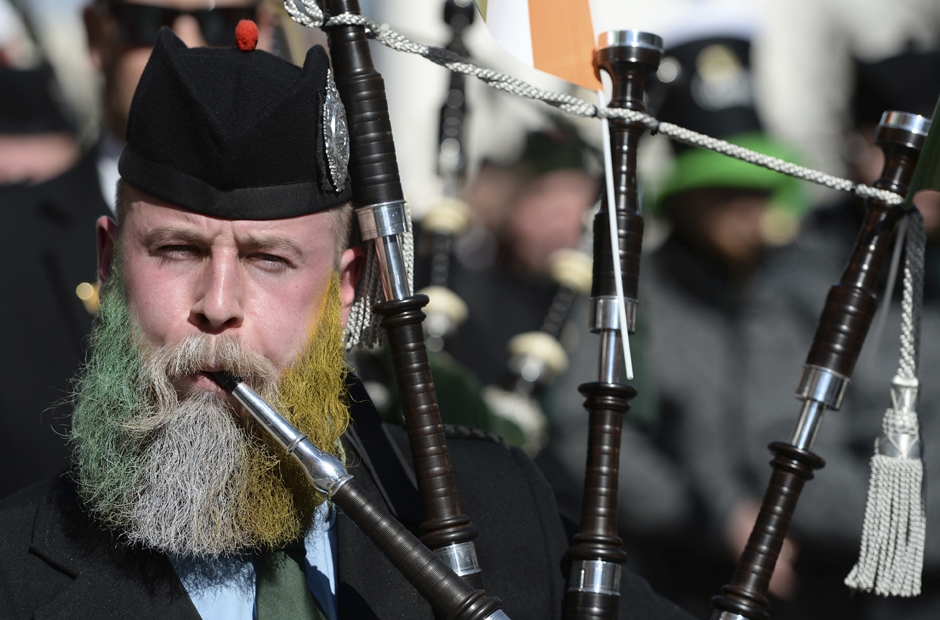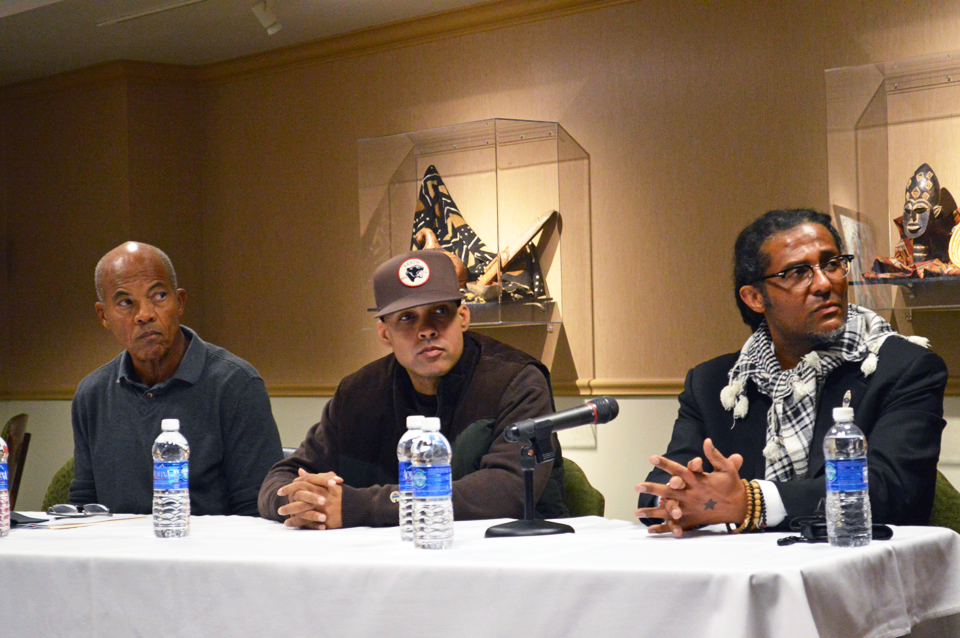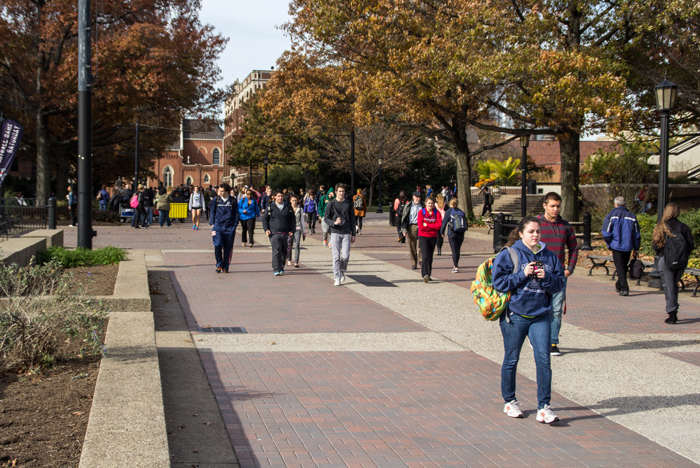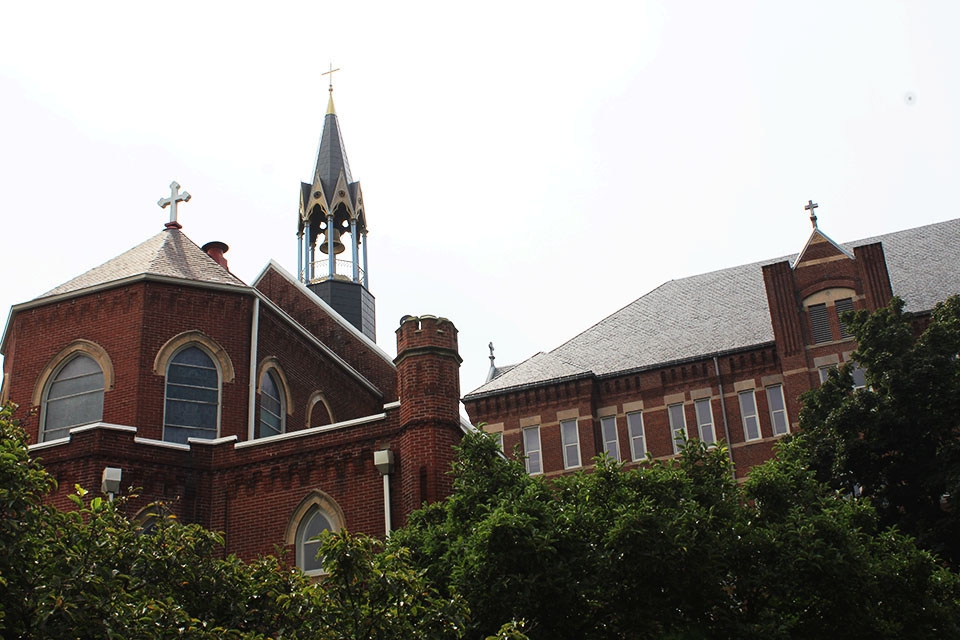

A participant in Munich’s St. Patrick’s Day parade. The holiday is celebrated all over the world.
By Madeline Bartos | Staff Writer
St. Patrick wasn’t Irish, his name wasn’t even Patrick and the original color associated with St. Patrick’s Day was blue. So how did a holiday honoring a British guy named Maewyn Succat explode into a global celebration of Irish culture?
Maewyn Succat was born as a nobleman in fifth century Britain to Christian parents. Succat himself was an atheist until he was kidnapped by Irish pirates. Philip Freeman, author of “St. Patrick of Ireland: A Biography,” explained in an interview with National Geographic that during Succat’s 17 years with the pirates, he converted to Christianity to help him survive the hardships of captivity.
After escaping, he decided to return to Ireland to become a priest. He changed his name to Patricius, or Patrick, which is a Latin term for “father figure.” Marion Casey, an assistant professor of Irish Studies at New York University, said in an interview with Time that while St. Patrick was in Ireland, he had so much luck converting the Irish from Druid culture to Christianity that, after his death, he was named Ireland’s patron saint. After his death in 1631, a holiday in St. Patrick’s Day was started as a feast during Lent, allowing Christians a break from abstinence.
When the holiday celebrations started to get out of hand in the 1720s, the Church tried to bring the meaning of the holiday back to St. Patrick by assigning him a botanical item — the shamrock. Legend says that St. Patrick used the three leaves of the shamrock to explain the Christian Holy Trinity.
According to Casey, until the 1798 Irish Rebellion, the color associated with St. Patrick’s Day was blue. During that conflict, the British wore red, so the Irish chose to wear green while singing the song “While Wearing Green.”
While the holiday was originally a feast, the excessive consumption of Irish alcohol didn’t begin until the late twentieth century, when a law closing pubs down for St. Patrick’s Day was repealed. The parades began in 1726, when British soldiers fighting in the American Revolutionary War led a procession through New York City to celebrate their Irish roots.
Duquesne has its own Irish roots planted in Dublin, where one of the university’s study abroad campuses is located. The campus staff are no strangers to St. Patrick Day celebrations in both Pittsburgh and Dublin.
“I think in the U.S., and especially in Pittsburgh, people love to celebrate St. Patrick’s Day because so many in our area have Irish roots,” said Kelsey Sobecki, assistant director of Duquesne’s Dublin campus. “The holiday is a chance to celebrate national pride and culture.”
The parades might have begun in America, but it didn’t take long for Ireland to capitalize on the popularity of the holiday. As a way to boost tourism, Ireland adopted the tomfoolery in a way the 1720s church may have thought is a little over the top.
“Here in Dublin, the parade and the celebration is just on a much larger scale,” said Alyssa Smith, another assistant director for Duquesne in Dublin. “St. Patrick’s Day here, to Irish, is like Thanksgiving to Americans, in a way. St. Patrick’s Day is always a day off in Ireland, so the parade and celebration will always be on March 17, not on the weekend before or after.”
To celebrate, Dublin hosts a four-day St. Patrick’s Day festival, which according to their site, aims “to offer a national festival that ranks amongst all of the greatest celebration in the world.” Despite Dublin hosting arguably the grandest celebration in the world, people around the globe celebrate quite a bit, too.
It is a day to feel pride in being Irish whether you are a native, you have ancestors from the island, or you are just Irish for the day,” Sobecki said.
Duquesne in Dublin students will be on spring break during St. Patrick’s Day, but that won’t shut down celebrations on campus.
“We don’t have anything specific planned on the day itself, as we are in spring break and some students are traveling or have friends or family visiting,” said Nora McBurney, director of Duquesne in Dublin, “But on Thursday night we are inviting students to listen to some traditional Irish music and then do a walking tour of Dublin to see some of the city’s most iconic buildings lit up in green for St. Patrick’s Day.”
With a little Irish pride, folklore and Guinness, the past 16 centuries have evolved St. Patrick’s Day from a break in the middle of Lent into a global celebration.
“I love seeing all of the streets crowded on St. Patrick’s Day,” Smith said. “It seems like everybody is out of their apartments or houses to celebrate. Also, there are different celebrations all across Ireland and it is fun to see the next day how each city celebrated.”




